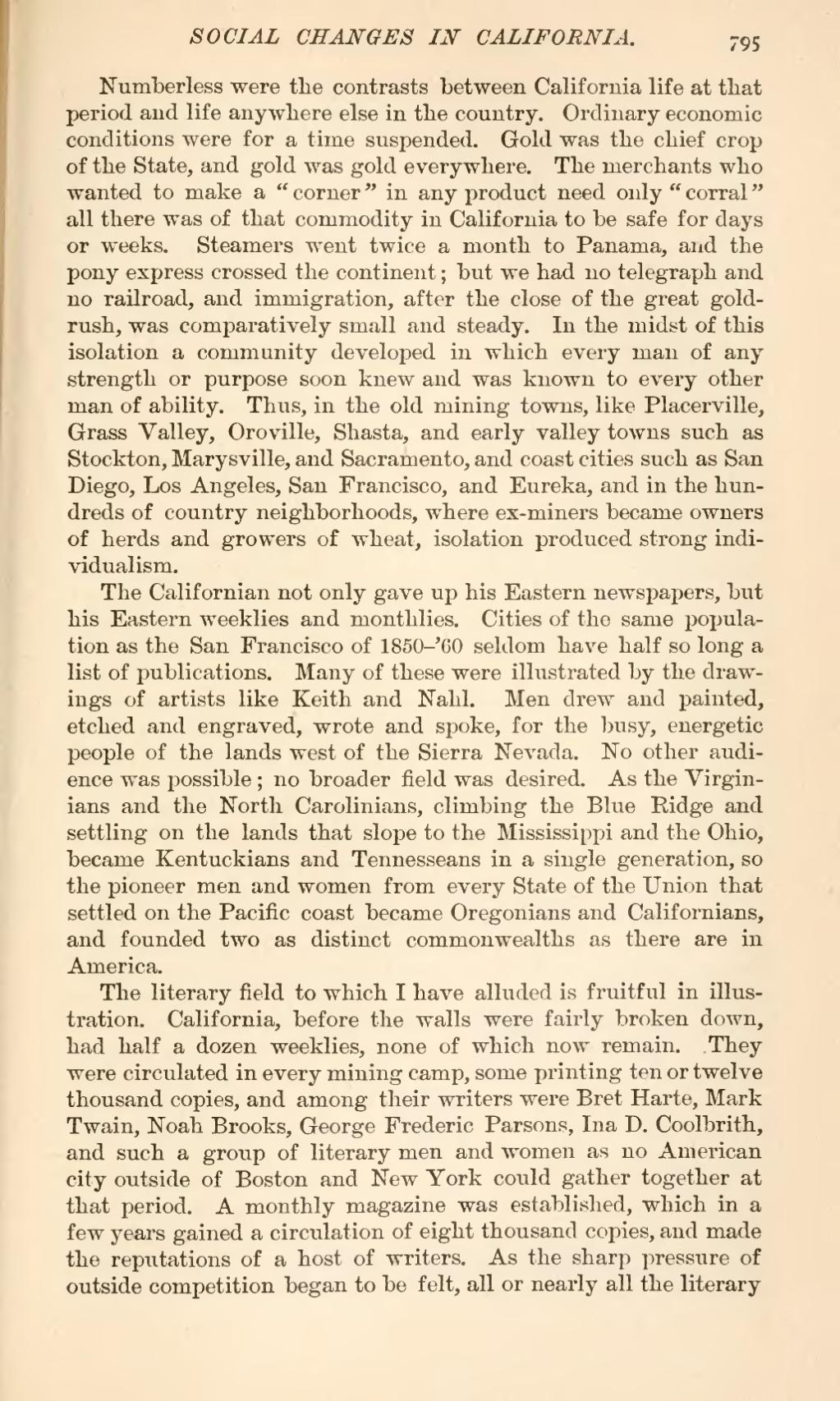Numberless were the contrasts between California life at that period and life anywhere else in the country. Ordinary economic conditions were for a time suspended. Gold was the chief crop of the State, and gold was gold everywhere. The merchants who wanted to make a "corner" in any product need only "corral" all there was of that commodity in California to be safe for days or weeks. Steamers went twice a month to Panama, and the pony express crossed the continent; but we had no telegraph and no railroad, and immigration, after the close of the great goldrush, was comparatively small and steady. In the midst of this isolation a community developed in which every man of any strength or purpose soon knew and was known to every other man of ability. Thus, in the old mining towns, like Placerville, Grass Valley, Oroville, Shasta, and early valley towns such as Stockton, Marysville, and Sacramento, and coast cities such as San Diego, Los Angeles, San Francisco, and Eureka, and in the hundreds of country neighborhoods, where ex-miners became owners of herds and growers of wheat, isolation produced strong individualism.
The Calif ornian not only gave up his Eastern newspapers, but his Eastern weeklies and monthlies. Cities of the same population as the San Francisco of 1850-'60 seldom have half so long a list of publications. Many of these were illustrated by the drawings of artists like Keith and Nahl. Men drew and painted, etched and engraved, wrote and spoke, for the busy, energetic people of the lands west of the Sierra Nevada. No other audience was possible; no broader field was desired. As the Virginians and the North Carolinians, climbing the Blue Ridge and settling on the lands that slope to the Mississippi and the Ohio, became Kentuckians and Tennesseans in a single generation, so the pioneer men and women from every State of the Union that settled on the Pacific coast became Oregonians and Californians, and founded two as distinct commonwealths as there are in America.
The literary field to which I have alluded is fruitful in illustration. California, before the walls were fairly broken down, had half a dozen weeklies, none of which now remain. They were circulated in every mining camp, some printing ten or twelve thousand copies, and among their writers were Bret Harte, Mark Twain, Noah Brooks, George Frederic Parsons, Ina D. Coolbrith, and such a group of literary men and women as no American city outside of Boston and New York could gather together at that period. A monthly magazine was established, which in a few years gained a circulation of eight thousand copies, and made the reputations of a host of writers. As the sharp pressure of outside competition began to be felt, all or nearly all the literary

